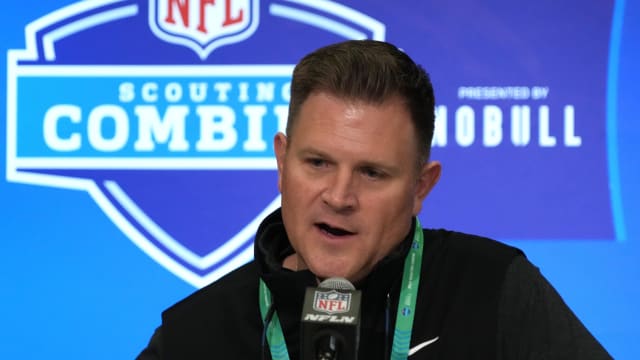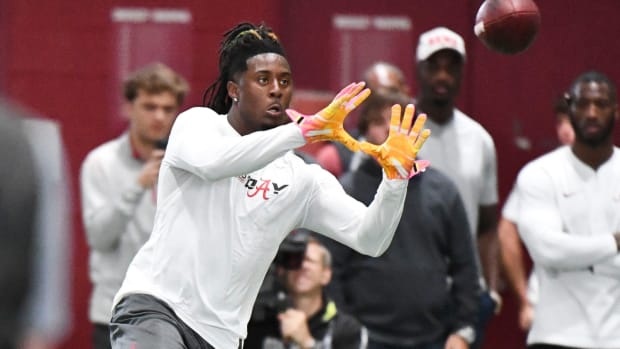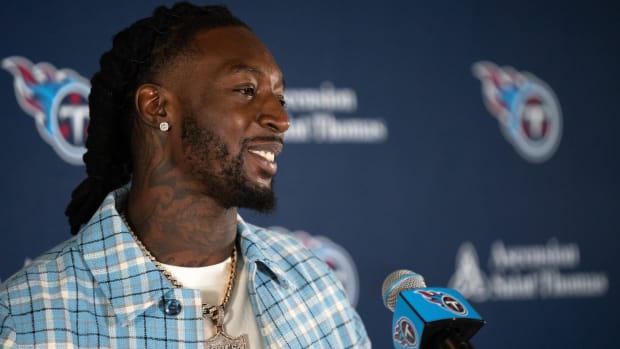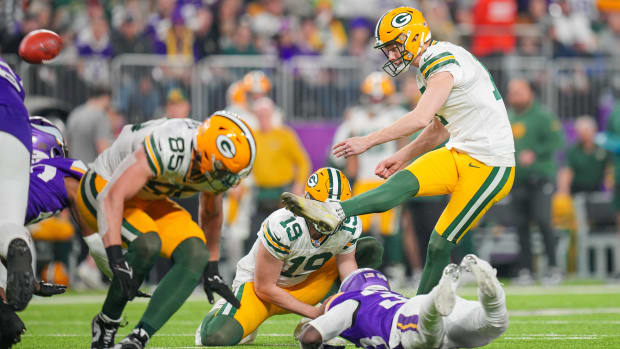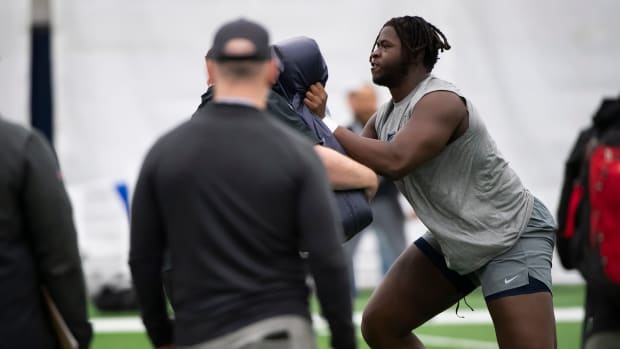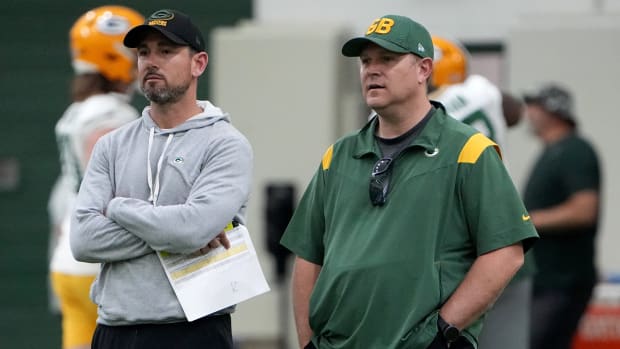
Packers Continue Youth Movement in Free Agency, Building With 2025 in Mind
This time last year, the Green Bay Packers had many more questions than they had answers.
The goal for the 2023 season was to evaluate young talent and, most importantly, determine whether or not Jordan Love could be a franchise quarterback. General manager Brian Gutekunst was reluctant to add veterans through free agency that would take away snaps from younger players. They also didn't have much money to do so. Their first move in free agency came four days after the league’s legal tampering window opened, when they signed long snapper Joe Fortunato.
A year later, the Packers were one of the most active teams on Day 1 of free agency. They are certain that Love is their franchise quarterback and have plenty of reasons to be optimistic about the pieces around him, too.
Gutekunst often talks about viewing roster construction through the lens of three-year windows. The 2024 season will be the second year of the first window with Love as the starter. Reading between the lines of the early moves made by the Packers in NFL free agency, the front office is making an aggressive push to make the most of the next two years, when most of their core players are young and inexpensive.
Before free agency, the Packers had the youngest roster in the NFL, and only continued the push toward youth by releasing three of their four oldest players in David Bahktiari, De’Vondre Campbell and Aaron Jones. They replaced the 29-year-old Jones with 26-year-old Josh Jacobs. They let 26-year-old safety Darnell Savage walk in free agency and replaced him with 24-year-old Xavier McKinney.
Most teams look to go "all-in" by building a superteam around young quarterbacks before they have to pay them top-end money. The Packers won’t have that luxury, as they'll likely extend Love to a long-term deal this May.
However, they should benefit from most of their offensive players still being on rookie deals. The Packers had 23 players take at least 10 percent of the offensive snaps in 2023. Of that group, 13 will be on rookie contracts in 2024, including the top six receiving targets. The Packers’ offense was the cheapest in the NFL last year, with a salary cap hit of $88.09 million. For 2024, it is expected to drop to around $67 million. The average age of the offense is just 24.2 years old.
The inexpensive offense allowed the team the flexibility to make the two aggressive signings of McKinney and Jacobs. It's interesting to look at both of the contracts past the sticker price.
Though Jacobs’ deal lasts four years and could reach up to $48 million, however, only $12.5 million of it is guaranteed. The Packers could easily release Jacobs following the 2025 season without having to deal with any significant dead money against the cap.
For Jacobs, it's a very similar deal to what the Packers signed Jones to in 2021, when Jones was also 26. A 1,100-yard season from Jones in 2022 led to the Packers restructuring Jones deal ahead of the 2023 season to lower his cap hit from $20 million to around $8 million.
Jacobs likely will have to have similar production that Jones had and show few signs of regression in order for the Packers to keep him past 2025. How the Packers' possible running back selections in this year's draft turn out also will play a big factor in determining Jacobs' future.
McKinney does seem to fit more in the Packers' long-term plans. Out of his four-year, $67 million deal, $23 million is guaranteed. McKinney will be an immediate impact player for a Green Bay defense that was in deep need of a safety.
Based on the details of the two signings and the three veteran releases, the 2025 season seems to be the year when the Packers’ front office is banking on it all coming together.
It's the final year with the 2022 draft class under rookie contracts. The heavy free agency class will include linebacker Quay Walker, defensive tackle Devonte Wyatt, wide receivers Christian Watson and Romeo Doubs, along with offensive linemen Sean Rhyan, Zach Tom and Rasheed Walker. The combined cap hit in 2025 for those starters will only reach around $16.4 million.
Realistic expectations for 2024 would include the defense dealing with the learning curve of changing to a new base system under first-year defensive coordinator Jeff Hafley. Oddly enough, the last time the Packers made a change to their base defensive scheme came with the hiring of Dom Capers in 2009, the second year with Aaron Rodgers as the starting quarterback.
It's possible the offense will continue to be ahead of its expected schedule of development, but coach Matt LaFleur will have to deal with the challenge of the rest of the league having a full season worth of film to study film on Love and the rest of the offense.
But by 2025, the defense will have a year under its belt and the offense will benefit from two full seasons of growing together. The approach to the roster that team is taking right now certainly is not what most would consider being "all-in" for the next two seasons. But it is evident the front office recognizes the small window they have with an inexpensive offense with rich potential.

